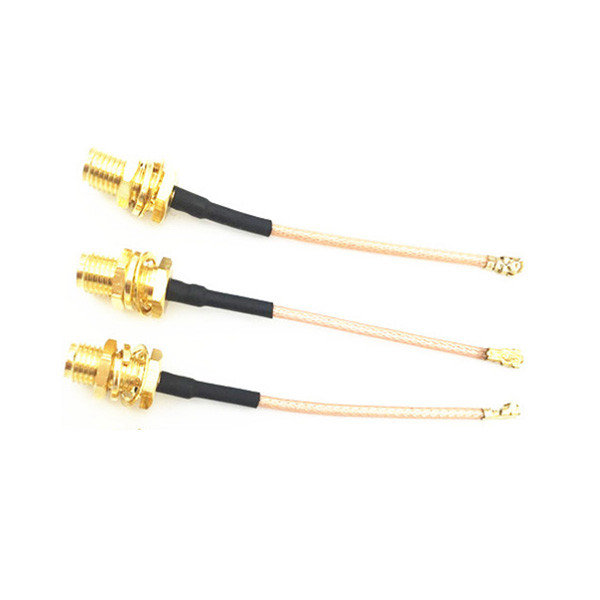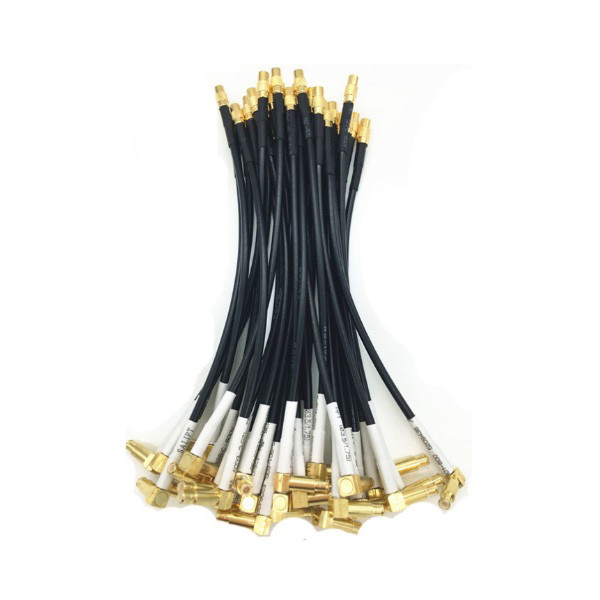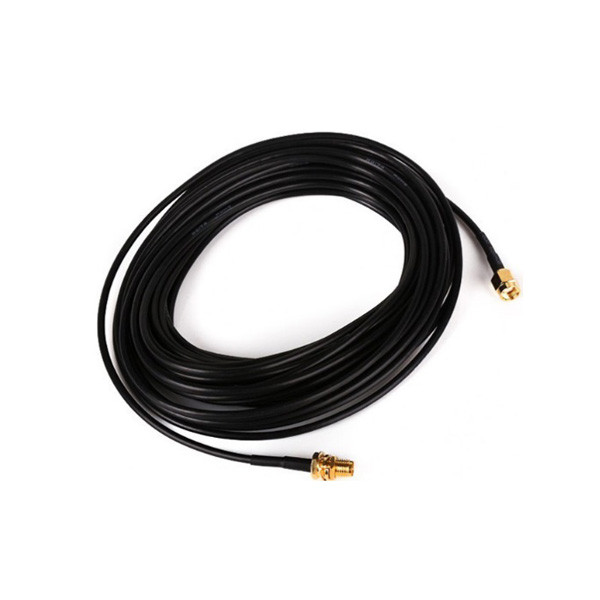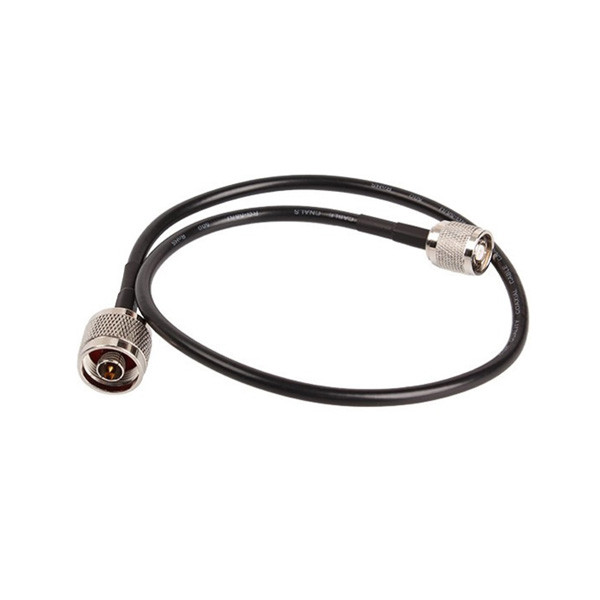
RF (Radio Frequency) cable assemblies are a critical component in a wide range of communication and electronic systems. They are used to transmit signals between devices while ensuring minimal signal loss and maintaining high performance across various frequencies. Whether you're involved in telecommunications, military applications, or industrial environments, understanding the types and applications of RF cable assemblies is essential.
This blog will cover the following aspects of RF cable assemblies: the different types, their key uses, and an in-depth look at specialized variants such as RF coaxial cable assemblies, custom RF cable assemblies, and high power RF cable assemblies. We will also explore the importance of selecting the right cable for specific tasks.
Introduction to RF Cable Assemblies
RF cable assemblies play a vital role in the transmission of radio frequency signals across different industries. These cables are designed to carry high-frequency electromagnetic signals over short to medium distances with minimal loss, making them essential for the effective functioning of many modern communication systems. From consumer electronics to satellite communication, RF cable assemblies are critical in ensuring data is transmitted efficiently and reliably.
What is an RF Cable Assembly?
An RF cable assembly consists of a cable and one or more connectors designed specifically for RF signal transmission. These cables are typically constructed using a coaxial structure to shield the signal from electromagnetic interference (EMI).
IPEX to SMA female Connector RG178 RF Coaxial Cable Acssembly XMR-L008
Key Components:
- Center Conductor: Usually made of copper, this part carries the RF signal.
- Dielectric Insulator: Surrounds the center conductor, preventing signal loss and maintaining impedance.
- Outer Shield: A conductive shield that protects against external EMI.
- Outer Jacket: Provides insulation and mechanical protection.
These assemblies are commonly used in environments where signal integrity is paramount, such as in telecommunications, data transmission, and military communication.
RF Coaxial Cable Assemblies
RF coaxial cable assemblies are the most common type of RF cable used in signal transmission. Coaxial cables are characterized by their concentric structure, which ensures a consistent impedance along the cable, minimizing signal loss and interference.
Key Features:
- Excellent Shielding: Coaxial cables provide superior protection against interference.
- Wide Frequency Range: These cables can handle a wide spectrum of frequencies, from megahertz (MHz) to gigahertz (GHz).
- Low Loss: The design ensures minimal signal loss over distances, crucial for high-frequency applications.
Common Applications:
- Satellite communication
- TV and radio broadcasting
- Wireless networks (Wi-Fi, cellular networks)
- Laboratory testing equipment
High Power RF Cable Assemblies
For applications requiring the transmission of high-power RF signals, high power RF cable assemblies are the ideal choice. These assemblies are designed with materials and connectors that can handle increased power without compromising signal quality or safety.
Characteristics:
- High Power Handling: Capable of managing RF power in the range of hundreds to thousands of watts.
- Heat Dissipation: Specialized designs ensure that heat generated during transmission is dissipated efficiently.
- Durability: Constructed using robust materials to withstand harsh conditions and prolonged usage.
Key Uses:
- Military radar systems
- Broadcast transmitters
- High-power amplifiers in industrial settings
- Satellite ground stations
Custom RF Cable Assemblies
Not all projects require off-the-shelf solutions. Custom RF cable assemblies are tailored to meet the specific needs of unique applications. Whether it's a specialized connector, non-standard cable length, or an unusual frequency requirement, custom assemblies are designed to ensure optimal performance in any environment.
MCX Female to MCX Connector RG174 RF Cable Assembly XMR-L013
Benefits of Custom RF Cable Assemblies:
- Tailored Design: Ensures the cable assembly meets exact electrical, mechanical, and environmental requirements.
- Specialized Connectors: Choose from a wide variety of connectors, including SMA, BNC, and N-type, to suit specific systems.
- Flexible Solutions: Custom solutions provide flexibility in cable length, frequency range, and power capacity.
Where Are Custom RF Cable Assemblies Used?
- Aerospace systems
- Defense and military communication
- Medical imaging devices
- Research and development
Common Applications of RF Cable Assemblies
RF cable assemblies are widely used across various industries. Here are a few examples:
Telecommunications:
RF cable assemblies are essential for cellular communication, satellite systems, and broadband networks. They enable high-frequency signal transmission with minimal loss, ensuring clear and uninterrupted communication.
Aerospace:
In aircraft and spacecraft, RF cable assemblies are used for communication, navigation, and radar systems. These assemblies must withstand extreme temperatures, vibrations, and pressure changes.
RPSMA Connector RG174 RF Coaxial Cable Acssembly XMR-L014
Military:
Durability is critical in military applications. RF cables in this field are designed to endure the harshest conditions while maintaining signal integrity. These assemblies are used in radar, surveillance, and secure communication systems.
Industrial:
From robotics to automated systems, RF cable assemblies are used to transmit data and control signals in industrial applications. These cables are built to endure heavy use, exposure to chemicals, and high temperatures.
Types of RF Cable Assemblies Based on Connector Types
Different types of connectors are used in RF cable assemblies, each suited to specific applications:
SMA Connectors:
Small, high-frequency connectors commonly used in laboratory equipment, cellular devices, and Wi-Fi systems.
N-Type Connectors:
Larger connectors designed for high-power applications and outdoor environments. They offer robust performance in harsh conditions.
TNC Connectors:
Similar to BNC connectors but with a threaded coupling mechanism for better performance at higher frequencies.
Types of RF Cable Assemblies Based on Cable Types
The type of cable used in an assembly greatly affects its performance:
Coaxial Cables:
The most commonly used for RF transmission, offering low loss and excellent shielding.
N male and N male connector RG58 RF coaxial cable acssembly XMR-L018
Semi-Rigid Cables:
Provide better shielding and higher frequency performance but are less flexible than coaxial cables.
Flexible Cables:
Offer versatility and ease of installation in environments where space is a concern.
RF Cable Assemblies in Telecommunications
RF cable assemblies are vital in cellular networks, Wi-Fi systems, and satellite communications, providing the necessary infrastructure for modern telecommunication. The ability to handle large volumes of data at high speeds with minimal interference is a key factor in their widespread use.
RF Cable Assemblies in Military and Aerospace
The military and aerospace sectors rely heavily on RF cable assemblies for mission-critical operations. These assemblies must meet stringent specifications to ensure durability, reliability, and high performance in extreme conditions, such as high-altitude flights, rugged terrains, and high-stakes military operations.
Choosing the Right RF Cable Assembly for Your Project
Selecting the correct RF cable assembly depends on several factors:
- Frequency Range: Higher frequencies require cables with better shielding and lower loss.
- Power Handling: High-power applications require cables designed to manage heat dissipation and avoid signal degradation.
- Environmental Conditions: Some applications require cable assemblies that are waterproof, UV-resistant, or can withstand extreme temperatures.
The Importance of Signal Integrity in RF Assemblies
Signal integrity is a critical factor in the design of RF cable assemblies. Ensuring that cables are well-shielded and properly terminated helps reduce signal loss and interference, which is essential for maintaining clear communication in high-frequency systems.
Custom RF Cable Assemblies: The Design Process
Customizing an RF cable assembly involves collaborating with manufacturers to specify details such as cable type, length, connectors, and power requirements. The design process ensures that the assembly is optimized for the intended use, taking into account the specific electrical, mechanical, and environmental factors.
The Future of RF Cable Assemblies
As communication technologies continue to evolve, so do the requirements for RF cable assemblies. Innovations in materials, design, and manufacturing processes are leading to more efficient, durable, and high-performance cables, enabling even faster and more reliable signal transmission.
FAQs about RF Cable Assemblies
What are RF cable assemblies used for?
RF cable assemblies are used to transmit high-frequency signals in applications like telecommunications, broadcasting, and military systems.
What is the difference between coaxial and semi-rigid cables?
Coaxial cables are flexible and offer good shielding, while semi-rigid cables provide superior performance at higher frequencies but are less flexible.
Can I get a custom RF cable assembly?
Yes, custom RF cable assemblies can be tailored to meet specific requirements such as length, connector type, and environmental conditions.
How do I choose the right RF cable assembly for high-power applications?
Look for high power RF cable assemblies that offer robust materials, good heat dissipation, and the ability to handle the required power levels without degrading signal quality.
Are RF coaxial cable assemblies suitable for outdoor use?
Yes, many RF coaxial cable assemblies are designed with weatherproof connectors and durable outer jackets for outdoor use.
What industries use RF cable assemblies?
Industries such as telecommunications, aerospace, military, industrial automation, and broadcasting rely on RF cable assemblies for high-frequency signal transmission.
Related Articles
- A Comprehensive Guide to Coaxial RF Connectors2025-01-08
- Custom Antenna Design for High-Performance Wireless Systems2024-12-24
- Understanding RFID Antenna and VHF/UHF Antenna: Functions, Types, and Benefits2024-12-17
- Choosing the Best LoRa Antenna for Your IoT Applications2024-12-11
- 10 Key Factors to Consider When Choosing an RF Connector2024-12-05
Contact us with the RF and Microwave coaxial connectors, RF cable assemblies and Antennas.
Get A Quote

XIAOMA is a supplier specializing in the R&D and manufacturing of RF CONNECTORS,CABLE ASSEMBLY AND ANTENNAS products. It also provides one-stop radio frequency solutions for electronic equipment. XIAOMA Technology's products are widely used in consumer electronics, communication equipment and infrastructure, mobile terminals and automotive electronics.
Contact Info
Contact Person : Rick, Haifa
Wechat / WhatsApp: + 86 18651023520
Follow
Share
Download after filling out the form



